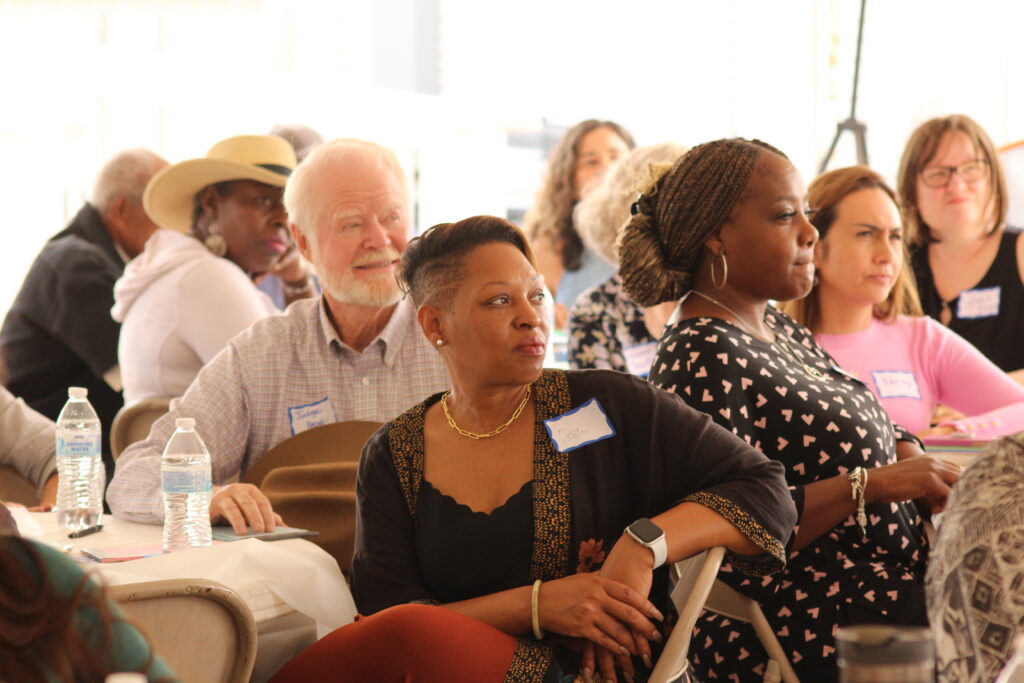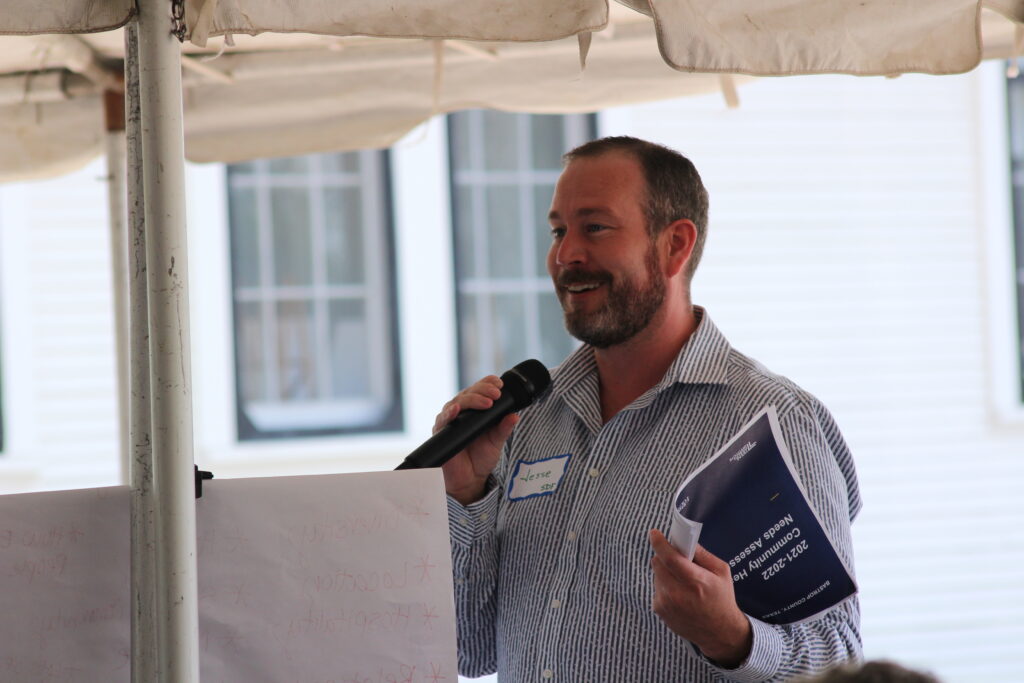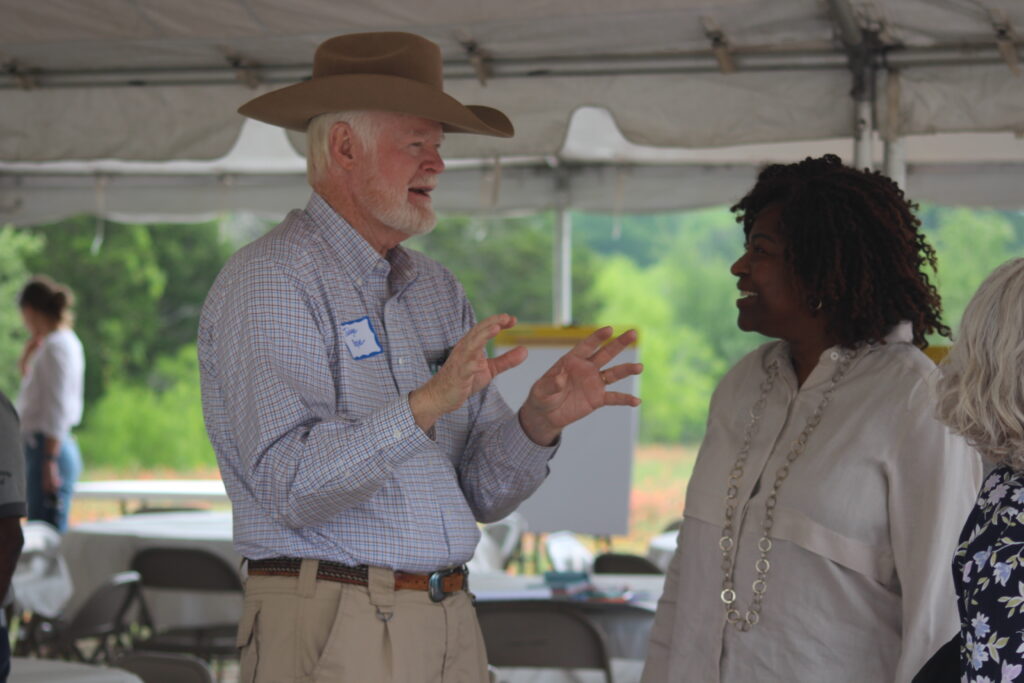Home > Research & Insights >
Insights
Assessing Impact in Rural Central Texas
Evaluation Report: Assessing the impact of our work in rural Central Texas and informing investment strategies to advance health equity
Takeaway
Introduction
The Foundation’s guiding principles are fundamental to informing how we work in the communities we serve while ensuring our strategies are aligned towards the goals outlined in our strategic plan, Pathways to Health Equity: Addressing Needs Today and Building a Healthier Tomorrow. We share our commitment to measure outcomes and strive for high-impact work within these guiding principles. By doing so, we can ensure that our investments and programs are effective, community-focused, and equity-driven. With this understanding, the Foundation is sharing the findings from an evaluation of our Thriving Rural Communities funding portfolio and key learning and insights to inform our work moving forward.

The goal of the Thriving Rural Communities portfolio under the 2020-2022 Strategic Refinement was to build community capacity while co-creating and investing in long-term, place-based solutions that addressed non-medical drivers of health and well-being. Strategies towards that goal centered on engaging and empowering rural communities to strengthen networks and transform policies, building community capacity of leaders and organizations, and making strategic investments that supported the infrastructure for change.
These strategies represented a new and exciting way of working for the Foundation. In 2021, the Foundation engaged an evaluation partner, Success Measures, to assess and document the impact of our work in the rural communities we serve: Caldwell, Hays, Bastrop, and Eastern Williamson Counties. The evaluators interviewed key informants, including grantees, thought partners, and network weavers. In addition, the evaluators reviewed strategy documents, participated in community meetings, and engaged in conversations with the Foundation’s rural advisors and key Foundation staff.
The Findings
The findings provided insights for future engagements and investments in our rural communities. Through this report, we heard from the community about the challenges to collaboratively addressing health equity, including community conditions where our partners are working, the limits of the nonprofit infrastructure that enables or restricts our partners’ ability to address health inequities, and the breadth of our network as an outcome of our community engagement strategies.
Community Conditions
The evaluation informants provided rich details on the nature of community-focused work in rural Central Texas, including many social needs that impact individuals’ health and health equity.
Community members made it clear that while each rural county in the Foundation’s service is unique, people in rural areas share a sense of pride in their assets, including their independence, identity, history, and natural beauty. We also heard from community members and nonprofit leaders throughout the area that they face common social challenges.
For instance, stakeholders named immediate community needs like access to healthcare, particularly mental health care, affordable housing, and availability of high-wage jobs as significant concerns in the community. Many of the needs raised in the interviews aligned with the Foundation’s 2022 Community Health Needs Assessments, like the lack of broadband access and the limited or costly and insufficient transportation options.

Nonprofit Infrastructure
Grant partner informants shared insights about the challenges of operating a nonprofit in these service areas and the implications of those challenges on their ability to shift from focusing on serving immediate needs to a longer-term vision of health equity for the whole community.
Specifically, the evaluators witnessed a disconnect between the demand for services and the limited number of nonprofits focused on health and well-being. While organizations reported that they are attempting to grow their programs, they acknowledged the limitations of the reach of their service delivery. There are early signs of success in organizational collaboration and coalition building, but progress thus far is limited.
The evaluation also highlighted specific barriers to the work of addressing health inequities. Notably, stakeholders did not have a consensus on the meaning of “health equity” nor an apparent understanding of any current system-wide efforts to advance health equity.
Consequently, the evaluators recommend that the Foundation encourage greater collaboration among grantees and other stakeholders in creating shared goals for each county, using tools like a theory of change and health equity agendas.
State of the Rural Network
Strengthening networks and building the capacity of individuals to lead community change was a new approach for the Foundation under the 2020-2022 Strategic Refinement. Thus, a central topic in the evaluation was the growth and impact of the Foundation’s network of individuals and organizations in rural counties. The report findings suggest that while some areas within the region have not been integrated into the network of stakeholders, in the communities where network weaving is most active, the initiative has successfully strengthened community engagement, and those involved have enjoyed the experience.
When discussing gaps in the rural network, many grant partners could identify the most marginalized communities in which community needs are highest. However, they admitted to needing more capacity and support to connect with, build trust, and serve those living in these more geographically isolated portions of their counties, particularly pockets of historically African American and Latinx communities.
“The divisiveness that is sometimes present in our community, we have to keep working through that. Some of it is old [county] vs. new [county]…trying to break those barriers down is going to be very important.” –Grantee Representative
These communities’ physical distance and isolation are compounded by the difference in views between the people born and raised in rural communities and those who have recently chosen to relocate there. Grantees and network weavers emphasized that people who have newly moved into the area are often more eager to connect. Interviewees desired to increase engagement with the most marginalized and historically underrepresented, but their outreach in these hard-to-reach communities is limited.
To be sure, the overwhelming feedback from those who participated specifically in network weaving activities enjoyed their experiences, and there have been signs of early progress in each rural county. The practice of network weaving includes training and events that connect individuals and create opportunities for collaboration on persistent, pressing problems in the community. As has been reported , the Central Texas Network has grown to impact over 1,800 individuals and several trained Weavers have successfully been elected to public office.
The evaluators offered potential ways of increasing the strength and breadth of the network of diverse leaders. They suggested investing more in resident leadership development, like network weaving, promoting intentional engagement with Black and Brown communities, and connecting with leaders of majority Black and Latinx churches and other faith-based organizations.

Foundation Learning and Insights
The Foundation staff came together to discuss and reflect on the findings and recommendations from the report and the implications for our future efforts to support community-led change throughout our region. Summarized below are the key insights and reflections from the team.
- Building, supporting, and sustaining the work of the resident-led networks that elevate community voice and empower residents in building strong, equitable, and resilient communities is central to the Foundation’s new strategic plan, Pathways to Health Equity: Addressing Needs Today and Building a Healthier Tomorrow. The Foundation sees an opportunity to leverage the community change models that have successfully engaged and empowered residents in rural counties throughout Central Texas.
- Capacity-building funding is critical to support community-based organizations’ call to meet immediate community needs and begin to engage in system-change work. The Foundation will continue to evolve how we strategically use capacity-building funding and other field-building tools to support organizations and individuals leading health equity work throughout our area.
- Diversifying and expanding our connections are essential to our goal of supporting community mobilization towards health equity. The Foundation is committed to centering historically marginalized populations, with particular attention to those who have thus far been hard to reach.
- To support collaborative efforts, the Foundation will continue exploring the power of community-led grantmaking. The Foundation has begun experimenting with this approach in the Rural portfolio, including opportunities through the Central Texas Network Weavers for shared gifting and, more recently, through a grant to the Fayette Community Foundation (FCF) to create The Rural Community Health Fund.
- The Foundation’s capacity to deepen relationships throughout our service area has primarily relied on our grantees. As we transition into the new Strategic Plan, the Foundation will consider how staffing and role responsibilities must change to foster a more extensive and inclusive network of resident leaders and nonprofit partners.
Conclusion
This evaluation report and subsequent recommendations have provided invaluable insights into the progress and impact of our Thriving Rural Communities funding portfolio. While the challenges are evident, residents have demonstrated their appetite for community change work and are eager to be equipped with tools and resources to tackle issues. Looking forward, many of the lessons learned and key insights can be applied to our goal of equipping historically marginalized communities to achieve the health priorities they set for themselves. We welcome your ideas on how the Foundation can implement these insights as we actualize our vision for Central Texas: a vibrant and inclusive community where everyone can reach their full potential.
To receive a copy of the full evaluation report or to share your thoughts or questions on this evaluation, please email [email protected].


